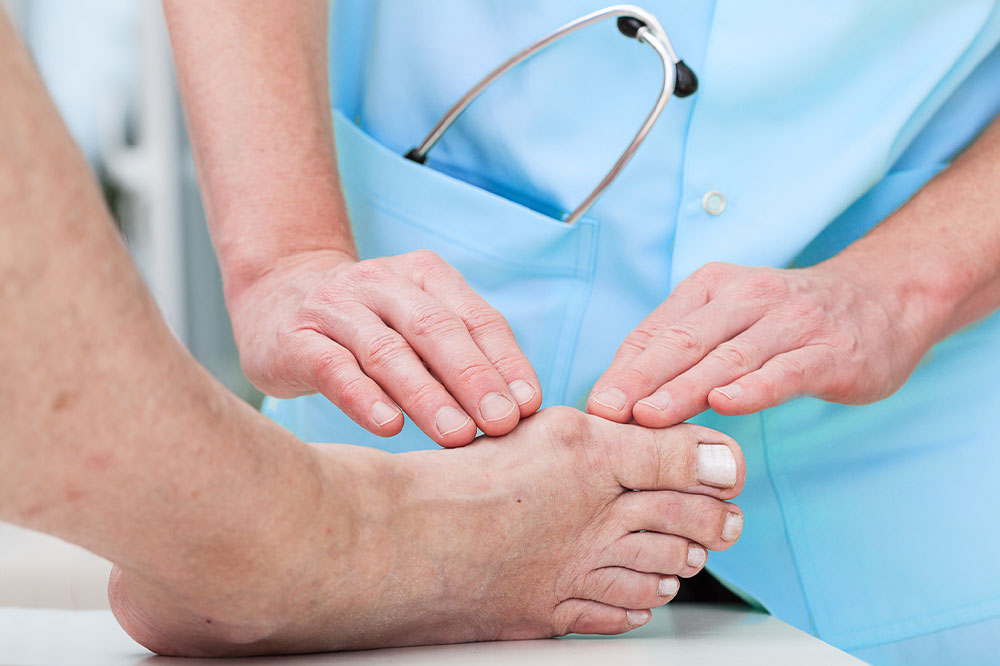
Bunion surgery – Types, recovery, cost, and care tips
A bunion (hallux valgus) is a large growth of tissue or bone around a joint at the base of the big toe or, sometimes, the little toe. It usually forms when the joint is stressed over a prolonged period. It could also occur due to genetic factors or wearing uncomfortable shoes. While bunions usually do not require treatment, one may see a health expert about eliminating the growth through surgery.
Understanding bunion surgery
Bunionectomy, or bunion surgery, is a procedure to correct bunions. This surgery has many types, and most involve repositioning the big toe. It is usually recommended if other treatment options do not help. The goal is to relieve pain and correct as much deformity as possible to improve the toe’s function. One should remember that this bone correction method is not cosmetic or intended to improve the foot’s appearance.
Types of bunion surgery
Depending on the case, the healthcare expert may choose one of many techniques to treat bunions. These include:
Osteotomy
In an osteotomy, the surgeon makes a couple of tiny incisions in the bones and uses pins or screws to realign the big toe joint. It is the most commonly performed procedure for bunions.
Exostectomy
In this surgery, the surgeon shaves off the bunion. The method is usually combined with osteotomy to reposition the toe. But it is rarely performed and is more suitable for minor bunions.
Arthrodesis
This method is for those who develop bunions due to arthritis inflammation. In arthrodesis joint fusion, the surgeon removes parts of the big toe affected by arthritis. After this, they place screws in the toe to hold the bones together through the healing process. The surgery is carried out only in severe cases of bunion formations.
Lapiplasty® 3D Bunion Correction™
The Lapiplasty® 3D Bunion Correction™ procedure uses special instrumentation, including screws and plates, to make aspects of bunion surgery more predictable. It also has a faster recovery time than traditional methods. The patented procedure could correct the entire bone in 3D and secure the unstable foundation to help people get back on their feet in about three to ten days in a walking boot. It may also reduce the recurrence of bunions and maintain 3D correction for about 13 to 17 months.
Recovery time
Once the surgery is complete, it may take about two weeks before the stitches are taken out and six to 12 weeks for the bones to heal and one to regain foot function. Patients may have to wear protective shoes or boots throughout this period. Individuals are advised not to put pressure on their affected foot while walking for faster recovery and to use crutches, scooters, or walkers for support. How much pressure a person can exert on the foot may vary depending on the procedure used to correct the bunion.
Healthcare experts recommend specific physical therapy exercises during recovery to restore the foot’s range of motion and strength. One should make regular appointments with the doctor to ensure their foot heals fully and quickly. Patients can usually resume regular activities after about three months following surgery, but the swelling may last six to nine months.
Estimated cost
The cost of bunion surgery depends on multiple variables. While most procedures are performed in an outpatient setting, some require inpatient care and emergency procedures, which cost more. Furthermore, the severity of the bunion, surgery type, doctor’s experience and fees, and post-operative treatment influence the cost. The estimated national average for bunion removal at ambulatory surgery centers is over $5,600 and more than $8,000 when performed in a hospital outpatient department. The price also differs based on location. So, the average cost of bunion removal could be lower than $5,000 in one state but over $7,000 in another.
Conservative treatments and care tips
If a healthcare expert does not suggest surgery for bunions, they may recommend nonsurgical treatments to relieve the pain and pressure. These may sometimes also be prescribed following surgery to manage pain. A few conservative treatments include:
Treatments administered intravenously to relieve pain.
Wearing comfortable shoes with ample space for the toes.
Using bunion pads or cushions to create a buffer between the foot and shoe and ease pain.
Using relief products like shoe inserts to distribute pressure evenly when the feet move, reduce symptoms, and prevent the bunion from worsening.
Applying ice to the bunion after standing or walking for prolonged periods to relieve soreness and swelling.
If bunions do not get better with these methods and cause pain, the healthcare expert may recommend surgery.




